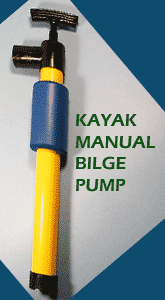
This is the last and smallest of the fly fishing hulls that I have designed. With hulls now at 8, 9, and 10 feet, there is no good reason to go either longer or shorter with a flat bottomed hull for fly fishing. If someone needs a larger hull, then one of my up coming Jon/Duck boat hulls will be a better choice for carrying more weight and people.
I was originally going to call the hull the “Otter 8?”, but there are already plenty of boats called Otters out there. Even though I saw a pair of Otters out playing on a log today on my 5 mile walk. But the new name became the Nymph, and I debated over to use an insect or fairy as the logo for the new hull. As you can see, I went with the winged fairy, and will use that logo for all the print material associated with it.

Being an 8ft hull, I wanted to have the layout on standard 4x8 sheets of 6mm (1/4”) plywood, and from working on the build drawings, it looks like it will take two full sheets, and part of the end of a third for the bow and stern transoms. There will be some full length “extra” from the layout and cutting of the side panels, and not too much will be leftover from the bottom panel. The hull will use most of the “extra” wood for the interior of the hull. I wanted this smaller hull to have enough hull in the water to support a full sized adult, and take the dog along too. So it has a pretty big footprint in the water for an eight foot boat, but it shouldn't be that heavy, even with the extra width to the hull.

I will be making the prototype hull for my next YouTube building series. I want to use it as a learning demonstration for building the 9ft FlyCaster, and 10ft Hudson Springs Pram. Those hulls only have photos taken during their construction, a few for the HSP, and a lot for the FlyCaster. All three hulls are similar in design, and how they are constructed, so if you see me build this hull, then you've seen me build all three. The only thing this hull doesn't have is a scarf joint to make the hull panels longer. Even if you have to make longer plywood panels to use on the FlyCaster or HSP, the finger joint method I've been using is much easier and faster than trying to put bevels in the ends of 6mm plywood. I have videos already posted on using the finger joint method, but I may go looking for the clips from doing other hulls to use again in this series.
Once I get the basic hull for the Nymph put together, to where that you can't tell if I'm building a FlyCaster or HSP, I will stop at that point in the construction for the end of that video. I will then come back for the last part of building the Nymph, and put a hole in the bottom. Monty Python would say; “And now for something completely different”, and that's what I will do. You will have to watch the build series to see what I'm going to do, but as a hint; I'm getting too damn old to be carrying boats around! No more off the truck and over the trails and through the woods on my back to the water.

Hope you have fun building the full color PDF model you can download from the link below. You can see more of my designs at www.duckworksbbs.com and I hope you will tune in to watch me build this hull on my www.youtube.com/redbarnboats site. This will be the next thing up, as I have the plywood in the shop, and I don't have to spend any money. Other than the something special. ;)
Thanks Again
Warren Messer
Red Barn Boats

click the image above for a free PDF
file to print and build a model from
|










